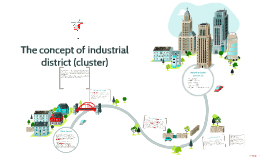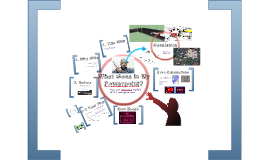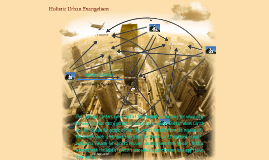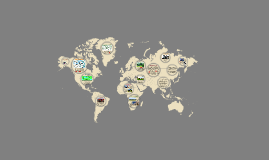City PowerPoint Project
Transcript: Additional Images Ottawa, ON Early Settlement Additional Images: Landmarks The O-Train is a mode of transportation throughout the city. It is a light rail transit system that will take you to different ends of Ottawa. The train does not interfere with road traffic and is better for the environment because of it's ability to carry more passengers than a vehicle on the road. City PowerPoint Project By: Emily Conway Open Spaces Parliament Buildings Institutional Areas The map above displays the components of the Ottawa River. People would have chose to settle in Ottawa many years ago because of the location of the river. It was a great source of water for them to get to quickly and easily. Immigrants could also fish in the river for an easy source of food. They could also use it for a transportation source if they had a boat. Urban Land Uses Above is a map of the Parliament Buildings located in Ottawa. These buildings contribute to the location of the city because they are unique, and only Ottawa has them. People may have settled here for employment, realising that working for the government would be a good job. Left, is a picture of a farm in Ottawa. Since there is farm land, there are not many homes in this area, making it a low-density area. O - Train Right, is an example of a high density residential area in Ottawa. In a small land area there are many homes in a row, and many in behind them. Growth of the City Left, is Ikea, a commercial building within the Ottawa area. Beside Ikea there are other businesses that take up land space in the area, making it a commercial area. Above is a school located in the Alta Vista area. This is an educational institution because it provides education to students. In Ottawa there are other various types of institutions, including: Religion institutions, law and legal system, hospitals, health care, and many more. This map of Ottawa displays the various streets in the area. These streets include local roads and highways. It also displays main buildings and includes the locations of the main waterways, including the Rideau Canal, the Rideau River, and the Ottawa River. The city of Ottawa was first settled in 1610 when a European traveler passed by it on their way to the Great Lakes. Ottawa is the fourth largest city in the country. People settled here for the large land area, but as well for the near access to water sources. Ottawa is located very close to many large bodies of water, including: The Ottawa River, Rideau River, and Rideau Canal. Ottawa also has four different seasons which all have benefits for different reasons. Since the city was discovered, it has come a long way in growth and will continue to grow as years pass. Right, is an image of the Rideau Canal. The Canal is a huge landmark in Ottawa. Aside from being a main water way, in the winter, people from all over come to skate on it. Street Layout Low and High Density Residential Left, is a picture of the Canadian War Museum, in Ottawa. This land mark is unique because it contains rare artifacts from military history. The Ottawa River This is an image of Strathcona Park. This is a recreational open space where people can enjoy the outdoors. They can do for walks, bike rides, or sit and enjoy the area. At one point this area would have just been land and someone would have settled here for the land space and the near availability of water. Transportation: The O-Train runs from either end of the city to the other. It does this to cover many locations for passengers to travel to. Low and High Density Residential: The farm areas are in more rural areas to accommodate the farms. The areas with more homes are in urban areas because of the higher number of people. Commercial: Ikea can not be located just anywhere. It is located in an area that takes up a lot of land because it is a large building. It also needs lots of land around it to make room for customer parking. Industrial: The industrial area is located where it is because it's an area where many buildings can fit into one place. Again, not every can fit multiple large buildings together. Institutional: The school is located in a friendly, open environment because if it's purpose. The school has over 1200 students and needs to be in a large area to fit everyone. It also can't be in a busy area, because of the number of students. Open Spaces: Parks can not be made up or built, therefore the park is in it's natural location. Right, is an industrial area within the city. This area contains light industry, but is beginning to grow. The buildings in the background prove this, as well as the path a park area. Commercial and Industrial Areas This is an image of a 30-foot-tall bronze spider outside the National Gallery of Canada (located in Ottawa). It is part of a six figure series, being sixth in the series. One of the main factors of growth since settlement in Ottawa is the transportation inventions. First the horse car system, then the transcontinental railway,

















